In order to analyze and study the operation status, existing problems and development trends of the raw materials industry in the past few months and the first half of next year, we will convey the spirit of the State Council’s recent efforts to curb the excessive growth of production capacity in certain industries, and research and deploy the recent key work, industry. The Ministry of Information and Information held the second national raw material industry symposium in Qingdao, Shandong Province from September 1st to 2nd. The meeting was hosted by Zheng Lixin, deputy director of the Raw Materials Division (Zhengshi Division). Deputy Director Gao Yunhu preached the "Guiding Opinions on Further Strengthening the Management of Raw Material Industry". Deputy Director Qi Shengling, deputy inspector Wang Caifeng and the heads of various offices attended the meeting. The relevant responsible persons of the competent industrial authorities of various localities participated in the exchange.
The recovery of the raw materials industry is not strong. Since the beginning of this year, under the influence of the country's policy of expanding domestic demand, the raw material industry has gradually stepped out of the trough, showing a good trend of output growth, price recovery and improved efficiency, and achieved remarkable results in maintaining growth. First, production is gradually recovering. Second, prices have stabilized and rebounded. Third, the benefits have changed significantly.
However, Chen Yanhai believes that the domestic and international economic situation facing the raw material industry is still very severe and complex, and there are still many uncertain factors affecting the smooth operation of the economy. The deep-seated contradictions accumulated over the years still exist, the foundation for stabilization and recovery is not solid, and production and management are once again passive. The possibility still exists.
First, international demand is difficult to recover in the short term. Overall, the recovery of the world economy is slow and tortuous. In order to support enterprises to expand exports, China has repeatedly adjusted its export policy since last year. However, due to insufficient effective foreign demand, trade protectionism has been escalating, and the effect is difficult to show. It is very difficult to maintain export stability. It is understood that since the second half of last year, the United States, the European Union and other countries have successively carried out anti-dumping and countervailing investigations on various products such as steel, aluminum, soda ash and tires.
Second, the internal motivation and vitality of economic growth are insufficient. Investment growth is mainly supported by government investment and bank credit funds. The market-driven characteristics are still not obvious, and private investment has not yet been fully promoted. The overall level of social security is not high, and further expansion of household consumption is restricted. Enterprises lack core technologies with independent intellectual property rights, and there is still a big gap between market competitiveness and developed countries.
Third, overcapacity is intensifying. At the end of 2008, there were overcapacity in most of the raw materials sectors such as China's steel, electrolytic aluminum, fertilizer, cement, and flat glass. With the rebound in market prices, some idle production capacity has been launched blindly without a significant increase in demand, which has impacted the fragile market supply and demand relationship, making it more difficult to adjust the structure, mergers and acquisitions, and eliminate backwardness.
Resolutely curb overcapacity in some industries Chen Yanhai said that the consolidation of the raw material industry will stabilize and develop, and promote the healthy development of the raw material industry. It is necessary to correctly handle the relationship between growth and structural adjustment, while maintaining a steady growth of the raw material industry, paying more attention to adjustment. structure. We must continue to implement the industrial adjustment and revitalization plan in an in-depth manner, and focus on mergers and acquisitions, technological transformation, and elimination of backward work. Chen Yanhai put forward the current work focus of the raw material industry.
First, closely monitor and analyze the operating conditions of the industry. Strengthen information communication with relevant departments, strengthen investigation and research on key areas and key enterprises, increase monitoring and analysis of major operational indicators, and understand the dynamic information of enterprise investment, production, inventory, sales, import and export, etc. The problem of emergence and orientation was found, and the research proposed targeted and operational policy recommendations.
The second is to resolutely curb overcapacity and redundant construction in some industries. The State Council executive meeting held on August 26, research and deployment to curb overcapacity and redundant construction in some industries, and put forward strict market access, strengthen environmental supervision, strictly comply with laws and regulations, and implement strict financial policies with safeguards and control. Five measures such as the establishment of an information release system. At present, the Ministry of Industry and Information Technology is working with relevant departments to study specific measures to curb the repeated construction of the steel industry and promote the healthy development of the steel industry.
The third is to prepare guidance to encourage, support and guide the merger and reorganization of steel and non-ferrous metals enterprises. These two tasks are the tasks required by the Ministry of Industry and Information Technology to clearly complete the adjustment and revitalization plan for the steel and non-ferrous industries. It has already carried out work with the seven departments including the National Development and Reform Commission and the Ministry of Finance, and strives to cooperate with the Ministry of Finance to encourage the merger and reorganization ideas, and release the implementation before the end of the year. Merger and reorganization is the highlight of the structural adjustment of the steel and non-ferrous metals industry. The Ministry of Industry and Information Technology is working hard to study relevant policies and measures and strive to make breakthroughs.
The fourth is to do a good job in technological transformation and promote technological innovation and technological progress. Technical transformation is an important means to strengthen and improve industry management. The local raw material industry management departments must strengthen the management of technical transformation projects, do a good job in supervising and inspecting the projects, track and understand the various preliminary work of the project and the use of state funds, and check the progress of the project and the quality of the project and the implementation effect of the project. Continue to do the preliminary work of the technical transformation project. In accordance with the requirements of “putting into production, building a batch, and storing a batchâ€, we will conscientiously do a good job in the reserve and review of next year's technological transformation projects.
The fifth is to promote the establishment of an outdated capacity exit mechanism and accelerate the elimination of backward production capacity. In accordance with the requirements of the State Council and the relevant raw materials industry adjustment and revitalization plan, we must promptly formulate the elimination of backward schedules, regularly announce the list of eliminated enterprises, and strengthen supervision and inspection. Comprehensively use economic, legal and necessary administrative means to strengthen coordination and cooperation with departments of land and resources, finance, finance, environmental protection, industry and commerce, quality inspection, and safety supervision, and clarify the responsibility of local governments at all levels to eliminate backwards. Cooperate with relevant departments to speed up the study of the exit mechanism of backward production capacity, and properly solve problems such as employee resettlement, enterprise conversion, and debt resolution.
Sixth, we will take into account the international and domestic markets and coordinate with relevant departments to do a good job in import and export coordination. Study and formulate the classification rules for non-ferrous metal deep-processing products, encourage the export of high-end products, and limit the export of general processed products. In response to the problem of excessive import of some petrochemical, steel and non-ferrous products, we actively cooperated with relevant departments to adopt anti-dumping and other trade measures. We must make great efforts to regulate the order of iron ore imports, guide the flow of iron ore, and promote the joint restructuring and elimination of steel enterprises. Lead the study and summarize the list of steel companies that meet the entry requirements. With regard to research and publication of the list of steel enterprises that meet the conditions for access, special arrangements are made. It is imperative to find out the roots of the regional steel industry, to be aware of the issues, to maximize the coverage of policies, and to safeguard the legitimate rights and interests of enterprises.
The seventh is to do a good job in the coordination of rare metals and strengthen the management of rare metals. Continue to do a good job in the management of non-ferrous metals and rare metals, strengthen the guidance and supervision of the management of rare metals in various places, and promote the healthy development of the rare metals industry.
Eighth is to continue the planning, policy and standard setting work. We will start research on the development of the “Twelfth Five-Year Plan†for iron and steel, nonferrous metals, petrochemicals and building materials industries, and do a good job in the development of the “Twelfth Five-Year Plan†for the iron and steel industry. Formulate high-strength steel development planning, rare metal development planning, coal-to-olefin productivity layout planning, and release industrial development plans such as gold and rare earth. Accelerate the formulation and revision of raw material product standards, pay close attention to research and formulation of cement industry access conditions, and publish a list of enterprises that meet the "Aluminum Industry Access Conditions".
The auger bit adds a long deep spiral flute for effective chip removal.
Two styles of auger bit are commonly used in hand braces: the Jennings or Jennings-pattern bit has a self-feeding screw tip, two spurs and two radial cutting edges. This bit has a double flute starting from the cutting edges, and extending several inches up the shank of the bit, for waste removal.
The Irwin or solid-center auger bit is similar, the only difference being that one of the cutting edges has only a "vestigal flute" supporting it, which extends only about 1â„2 in (13 mm) up the shank before ending.
The diameter of auger bits for hand braces is commonly expressed by a single number, indicating the size in 16ths of an inch. For example, #4 is 4/16 or 1/4 in (6 mm), #6 is 6/16 or 3/8 in (9 mm), #9 is 9/16 in (14 mm), and #16 is 16/16 or 1 in (25 mm). Sets commonly consist of #4-16 or #4-10 bits.
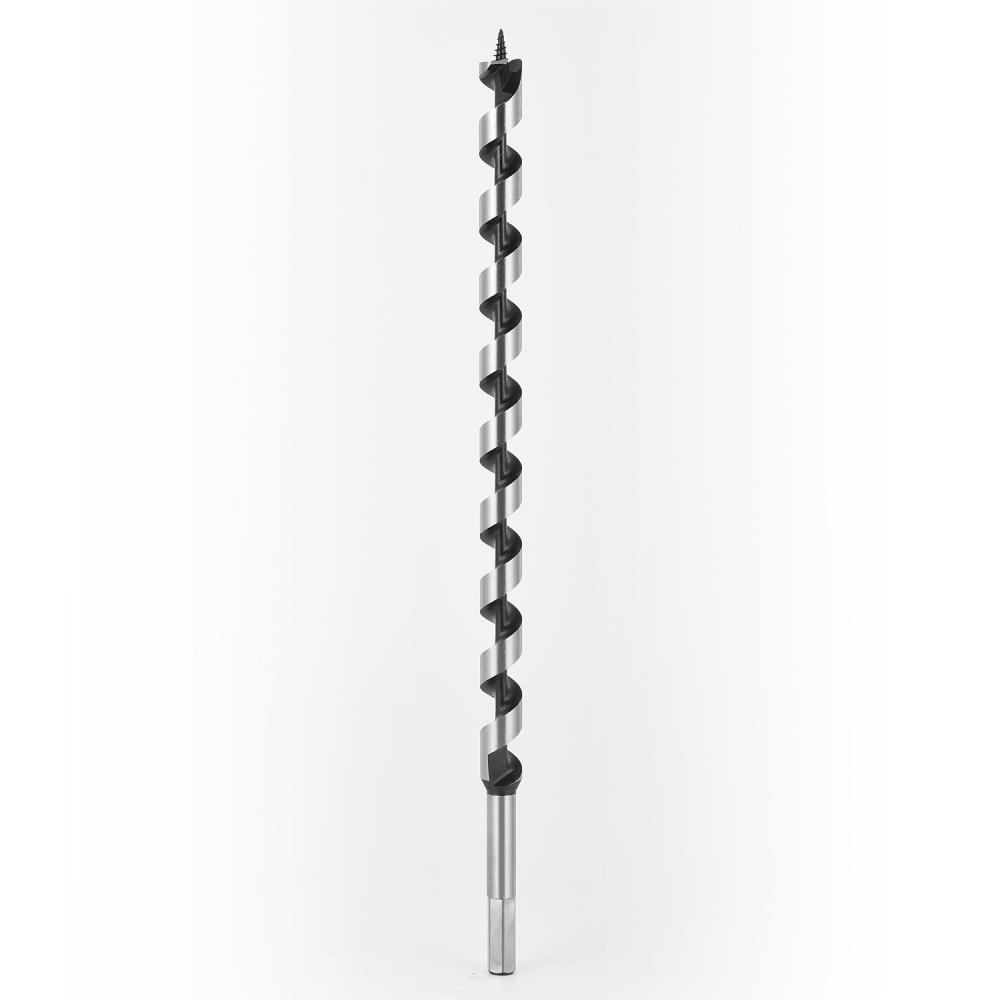
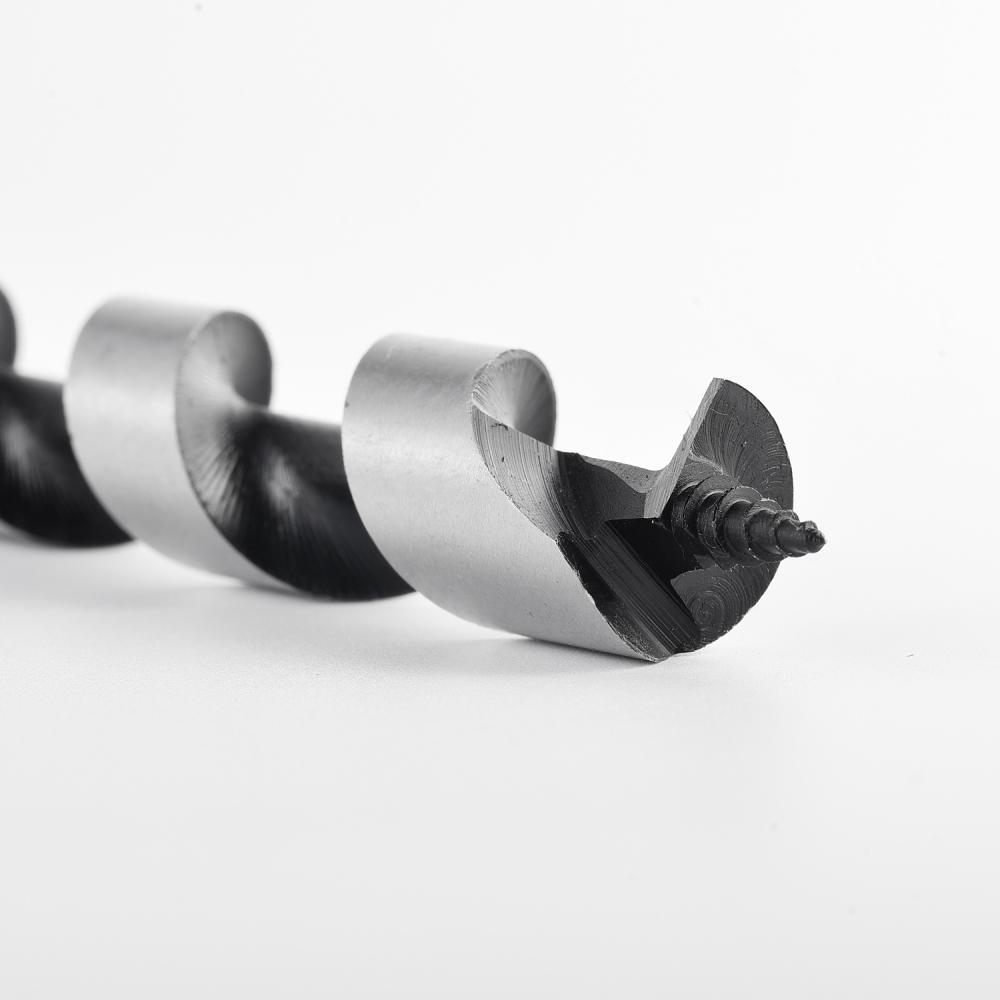

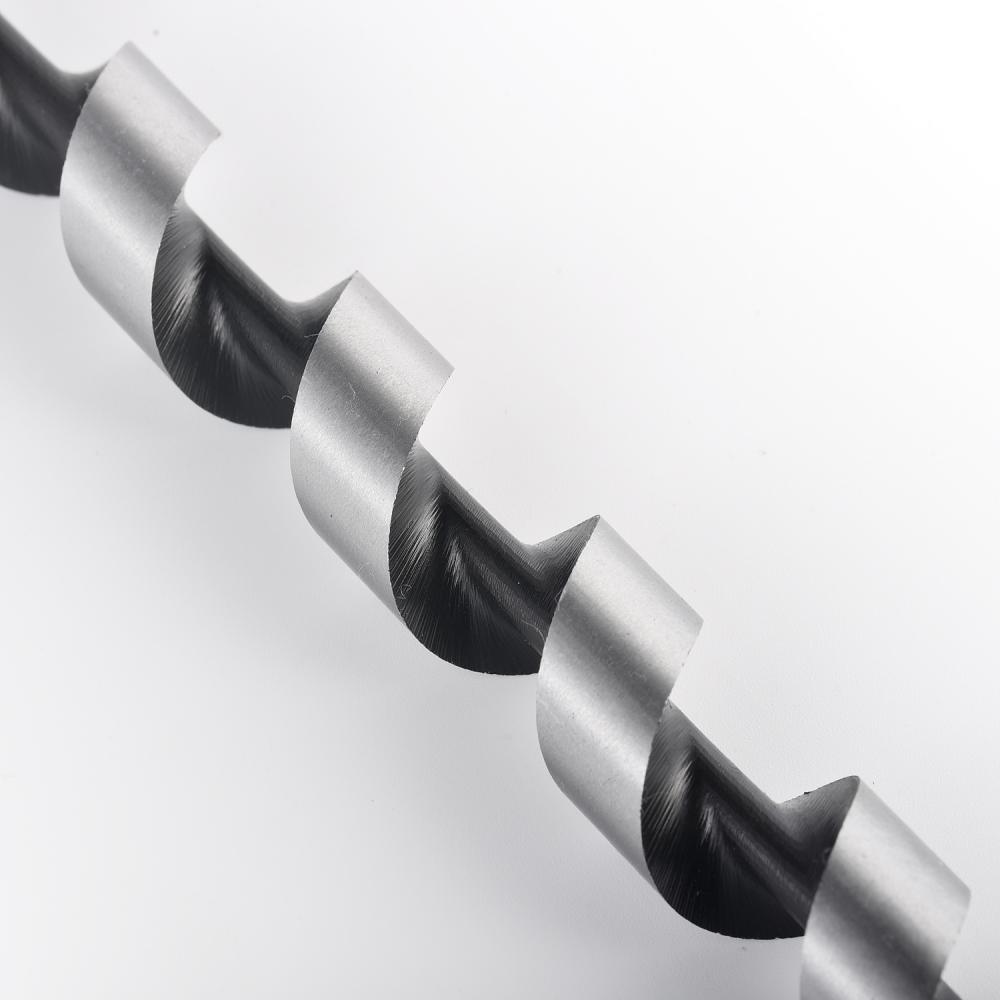
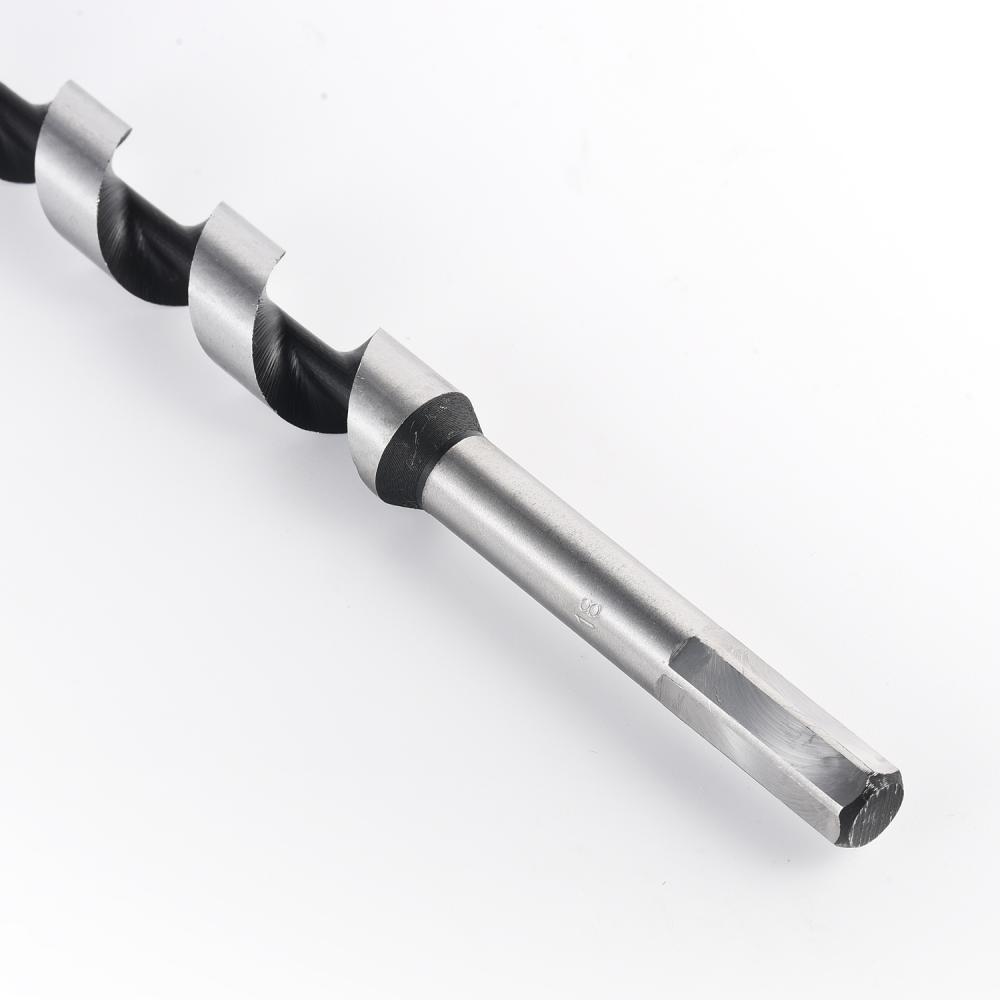
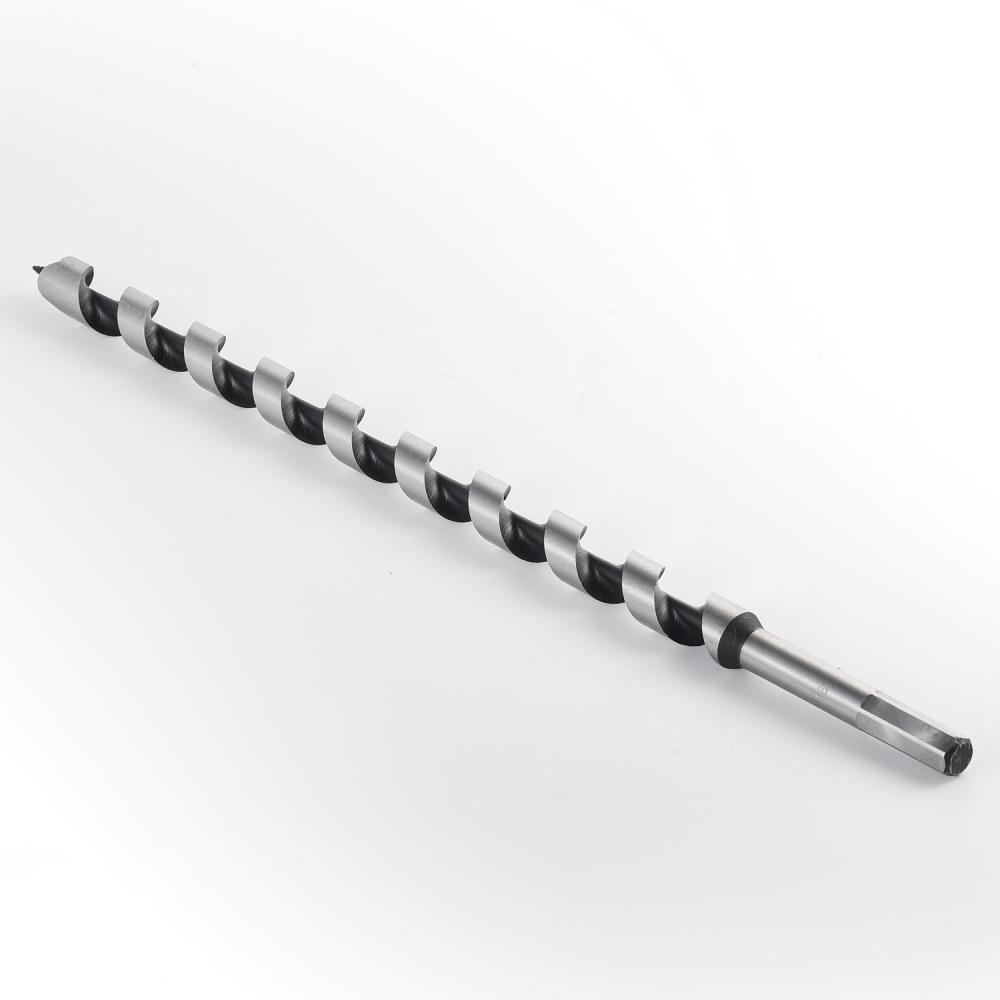
Extra Long Auger Bit,Auger Drill Bit,Drill Bit With Flute,Carbon Steel Wood Working
Behappy Crafts (suzhou)Co.,Ltd , https://www.haoyuebehappy.com